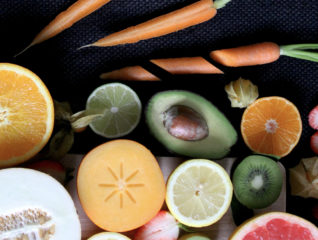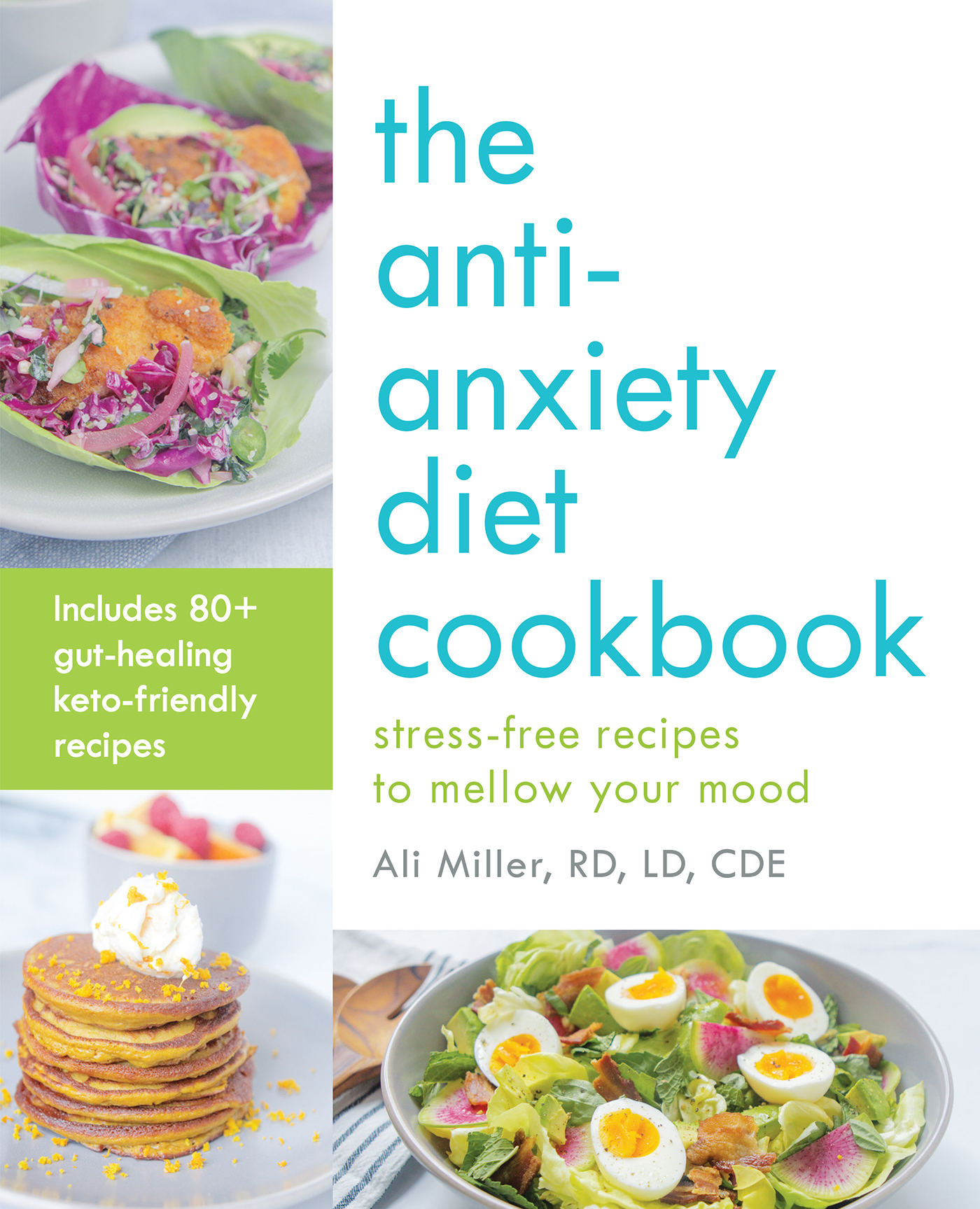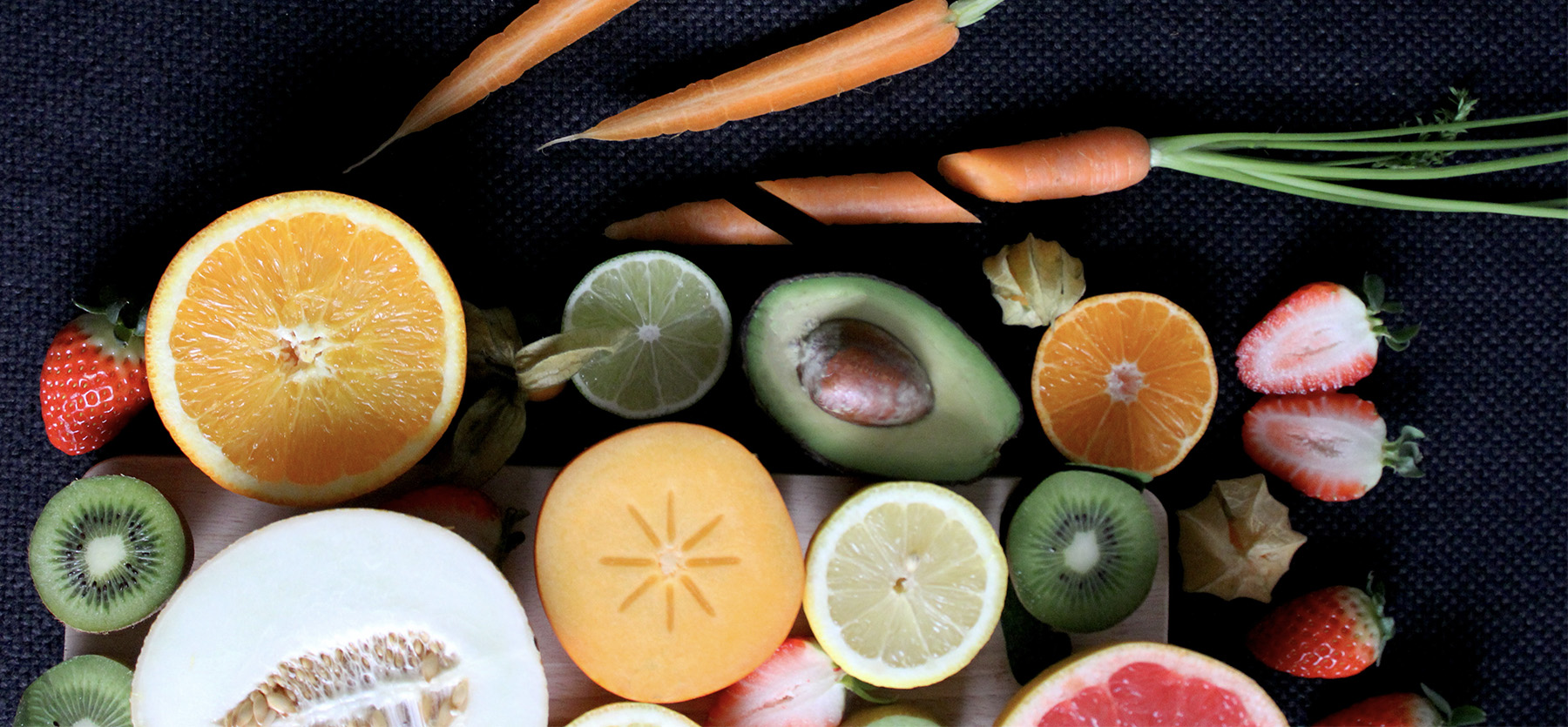
Food for Thought: Recipes for the Mind and Tips to Maintain A Balanced Diet
- Book Sample /
- Health
When most people think of a healthy diet, they automatically associate it with weight loss. While healthy and nutritious foods contribute to your overall health, it’s important to understand how the foods you consume play a role in your physical, mental, and emotional health. One of the key factors in improving and maintaining your health is having a balanced, nutritious diet. As a result, changes to your food choices can help boost cognitive functions and help reduce anxiety, depression, and other mental disorders.
Great Anti-Anxiety Diet Recipes for Beginners
If you want to get started on healthy and delicious recipes to help nourish your belly and mind, try these:
- Citrus Pumpkin Pancakes
- Farmer’s Market Salad
- Roasted Red Pepper Bisque
- Crispy Rosemary Chicken with Roasted Brussels Sprouts and Leeks
- Keto Avocado Brownies
Maintaining diet and nutrition can be challenging, especially with tons of information out there. But it’s easy to get lost in finding the best solution for you. Luckily, integrative dietician and food-as-medicine guru Ali Miller wrote The Anti-Anxiety Diet Cookbook to provide people with low-carb and brain-boosting recipes to help them eat their way to a calm mind. Below is an excerpt of chapter 1 of the book to cover what the anti-anxiety diet is and the 6 foundational building blocks to live by.
For more information, check out The Anti-Anxiety Diet Cookbook by Ali Miller RD, LD, CDE, on sale today!
What is the Anti-Anxiety Diet?
The anti-anxiety diet starts with a high-fat low-carb (HFLC) ketogenic diet. This provides an additional mood-stabilizing benefit beyond blood sugar control. (We’ll get to this in Chapter 2.) I developed the anti-anxiety diet as a way to reset multiple bodily processes using my Foundational 6 Rs approach to accelerate mind-body balance and promote optimal health. The food therapy in this book focuses on fueling the body with vitamins, minerals, antioxidants, and amino acids to pro-vide building blocks for neurotransmitters as signals in the brain that help to manage mood, reduce cravings, and resolve anxiety.
The anti-anxiety diet’s Foundational 6 Rs are: Remove Inflammatory Foods, Reset Gut Microbiome, Repair GI Lining, Restore Micronutrient Status, Rebound Adrenals, Rebalance Neurotransmitters.
1. Remove Inflammatory Foods
When you consume inflammatory foods, a greater amount of inflammatory chemicals circulate in your bloodstream. These can cross the blood-brain barrier, interfere with the way your neurotransmitters function, and drive distress signals, keeping the body in fight-or-flight mode. The primary inflammatory foods identified in the anti-anxiety diet are gluten, corn, soy, dairy, and sugar. These foods are included for one or many reasons: containing compounds driving gut irritation, the presence of omega-6 proinflammatory fats, the susceptibility to GMO farming practices, residual pesticide treatment, and influence on blood sugar levels.
Beyond these foods driving inflammation, which disturbs mental health and stress response, gluten with gluteomorphin and dairy with casomorphin have a direct relationship with our opioid receptors in the brain that may drive addictive behavior, aggression, and outrage, and worsen mood imbalance.
By removing inflammatory and mood-imbalancing foods, not only will you cool and soothe your GI tract, but your immune system, less burdened by compounds in the bloodstream, will signal your inflammatory army to retreat, reducing aches, pains, fatigue, and insulin resistance while supporting favorable neurotransmitter expression.
What Does This Mean for You?
To remove inflammatory foods, I recommend going on a 12-week elimination diet. This means no gluten, corn, soy, dairy, or sugar (the five inflammatory foods) for 12 or more weeks. During this period (and beyond for optimal eating on a long-term basis), it is important to be mindful of hidden sources of inflammatory ingredients and carefully read all food labels. Reduce total carbohydrates to 30 grams max per day to experience nutritional ketosis. This will reduce inflammation quickly and enhance mental clarity. (See Why Keto? on page 22.)
2. Reset Gut Microbiome
Your body has over 100 trillion cells of bacteria and yeast that line the mucosal membranes of your mouth, skin, and gut. Together they comprise 3 to 5 pounds of living bacteria known as the microbiome. The microbiome is the manufacturing plant for neurotransmitters and has the ability to work with your body in a state of symbiosis or against your body in a state of dysbiosis.
In a state of symbiosis, the microbiome produces anti-anxiety neurotransmitters such as serotonin and GABA. It also activates other complex mechanisms to regulate your stress and anxiety response. If the gut is in a dysbiotic state with bad strains of bacteria or yeast, it will produce more stress signals and anxiety-driving neurotransmitters such as epinephrine.
In addition to its influence on the sympathetic and parasympathetic stress response, the gut is the second brain of the body. It has unique signaling via the enteric nervous system, directly communicating with the central nervous system of the brain and spine.
When you are able to get those bugs working for you rather than against you, you may benefit beyond the increase of serotonin and GABA to experience improved regularity, less bloating, and clearer skin.
What Does This Mean for You?
A serving of culture a day keeps the doctor away! Focus on incorporating probiotic-rich foods into your daily diet. As dairy isn’t allowed in the first 12 weeks, you will explore coconut yogurt, cultured vegetables, and beverages. Use the A Serving of Culture a Day chart as a guide. Intolerance to probiotics is an indication of dysbiosis, which can be addressed with a gut cleanse. Search “Ali Miller RD Beat the Bloat Cleanse” for details. If you aren’t sure if you tolerate probiotic foods or have a balanced gut microbiome, you can take the Gut Bacteria Balance Quiz in The Anti-Anxiety Diet book or complete the Probiotic Challenge worksheet in the Anti-Anxiety Diet Guide at www.alimillerrd.com/anti-anxiety-diet-guide.
3. Repair GI Lining
The gut includes both the small and large intestine, which are essential for nutrient absorption and production, housing the immune system and microbiome, detoxification and hydration, neurotransmitter production, and interaction with the central nervous system. If the gut is in an optimal state of health, the lining will be intact, able to prevent large particles or irritants from entering the blood-stream, provide space for good bacteria to thrive, and enhance nutrient absorption.
When the gut is in a stressed state with leaky gut or damage to the delicate internal lining, you are at risk for nutrient deficiency and increased food and chemical sensitivity, as the damaged barrier allows large compounds into the bloodstream, creating an overactive inflammatory response. In addition, when the gut lining is damaged, many of the large particles that enter the bloodstream are more disruptive to brain and mental health as they now may cross the blood-brain barrier and interfere with neurotransmitters.
What Does This Mean for You?
Now that the primary dietary irritants are removed, work toward removing other lifestyle irritants and take proactive measures to reduce or replace them with less toxic options. Focus on healing your gut lining by adding therapeutic foods to support absorption of nutrients and reduce inflammatory reactions.
4. Restore Micronutrient Status
Nutritional status directly influences every function of the body. Perpetuated stress response is one reason for micronutrient deficiency. When you are in a chronic state of anxiety or worry, the body burns through antioxidants and B vitamins, as well as specific minerals and amino acids such as magnesium, zinc, selenium, serine, and glutamine. These same nutrients provide the primary compounds that are integral in mood regularity, management of the stress response, and greater resilience. For this reason, they can be a game changer as supplements. This intervention can temper drivers of anxiety by supplementing demand, thus preventing deficiency and symptoms.
What Does This Mean for You?
It is essential to consume a variety of whole, in-season foods in their most natural form for nutrient density. Using the recipes in this cookbook, you will combine single-ingredient whole foods, benefit from a synergy of complementary flavors, and eat to absorb the bioavailable nutrients in foods. To restore micronutrient status, focus on two to three choices from these nutrients:
• Activated B vitamins: vitamin B6 (pyridoxine), vitamin B9 (folate), vitamin B12, and inositol
• Mood-stabilizing minerals: magnesium, chromium, calcium, and zinc
• Antioxidants: selenium, vitamin C, glutathione, and vitamin E
5. Rebound Adrenals
The HPA axis is integral to the sympathetic fight-or-flight and the parasympathetic rest-and-digest modes. When the body is in reactive sympathetic mode, the HPA axis focuses toward adrenal stimulation, initially with the output of adrenaline (epinephrine) as a neurotransmitter that drives excitatory response in the body, increasing heart rate, blood pressure, blood sugar, and alertness, followed by a release of cortisol.
When reacting to a predator or shifting to survival mode, the body’s stress response is necessary and returns, once safe, to a parasympathetic regulatory state. However, when the HPA axis is activated in modern society, often it is due to a mental, emotional, or physiological stressor that is chronic rather than transient.
Chronic stimulation nullifies the feedback loop and causes a constant leak of cortisol, leading to imbalance in other adrenal compounds, including dopamine, the bliss neurotransmitter; norepinephrine, the balancer for epinephrine, a primary chemical in stress and anxiety expression; DHEA, a steroid hormone that impacts stress resilience and hormone health; and even aldosterone, a hormone that regulates sodium and blood pressure. Each of these compounds has a vital role in your body. It is important to reduce excessive output and rebound fatigued adrenals to benefit from their feel-good influence and anti-inflammatory effects.
What Does This Mean for You?
Spend some time considering if you are in HPA axis overdrive. Are you “stressed and wired” or in burned-out, “stressed and tired” mode? To assist in this process, use the Adrenal Fatigue and HPA Axis Imbalance quiz in The Anti-Anxiety Diet. Work to reduce the influence of chronic stress by practicing yoga, meditation, grounding or earthing outside (making contact with the earth’s electrons), breathwork, and quality restful sleep. Incorporate adaptogenic herbs, which aid in stress resilience and tolerance, as well as nervines to support relaxation and nervous system protection in your teas, daily morning beverages, and as a supplement to support HPA axis responsiveness. Consume a diet dominant in fat to support hormone production and adrenal function. Choose from avocado, nuts, seeds, coconut (in all forms), tallow, lard, and fatty cuts of pasture-raised meats and wild-caught fish. Aim to consume vitamin C–rich foods daily. Vitamin C can be found in the highest concentration in your tiny adrenal glands, where cortisol metabolism, regulation, and production take place. Add berries, bell peppers, citrus zest, and leafy greens to your daily diet to support optimal levels.
6. Rebalance Neurotransmitters
The central nervous system releases billions of neurotransmitters, all of which function as biological signals orchestrating a symphony in the brain. They regulate mood, perception, cognitive processing, and many daily functions. Protein compounds called amino acids are the building blocks of neurotransmitters. They combine in the presence of specific enzymes and cofactor nutrients.
Neurotransmitters also play a key role in managing inflammation and cognition and driving many autonomic nervous system functions. To complicate matters, the neurotransmitters of the central nervous system communicate directly with those produced in the gut via the enteric nervous system, which has more neurons than the central nervous system, including the brain and spine, combined.
Neurotransmitters are categorized as either excitatory, stimulating neuron firing, or inhibitory, reducing neuron activity. The stress-responding excitatory neurotransmitters made by the adrenal glands are known as catecholamines. These include dopamine, norepinephrine, and epinephrine to respond in fight-or-flight mode.
Beyond serotonin, GABA is an inhibitory neurotransmitter known for regulating anxiety and depression. GABA is a major chill pill of the brain, inhibiting anxiety and reducing physiological response to stress. Beyond balancing mood and mellowing out the mind, GABA can have anti-inflammatory effects on the gut itself, thus reducing the response of inflammatory chemicals and compounds. It can lower epinephrine, which in excess can drive panic, worry, irritability, and distress.
What Does This Mean for You?
A diet rich in amino acids tryptophan, tyrosine, and glycine will increase GABA production and have a calming effect. This includes clean sources of pasture-raised poultry and pork, grass-fed beef, as well as bone broth, gelatin, and pork skins. Ensure you are consuming ample protein to provide foundational amino acid support! Wild-caught fish or grass-fed, pasture-raised meats provide a higher-quality source of nutrients without taxing the body with high amounts of proinflammatory compounds found in conventional sources. How to optimize your neurotransmitter levels:
• Eat enough protein. Aim for ½ gram of protein per pound of body weight as a daily minimum.
• Support utilization and absorption of protein with digestive enzyme support, such as Naturally Nourished Digestaid.
• Get 7 to 9 hours of sleep at night.
• Practice deep breathing.
• Adjust environment to reduce stress and learn to say “no.”
• Practice perspective and gratitude.
• Reduce screen time and wear blue blockers, or special lenses that block blue light. Electronics and blue light burn out your dopamine.
• Consider amino acid supplementation such as tryptophan, tyrosine, L-theanine, and serine.
Looking for more information on foods you can eat to improve your mental health? Check out The Anti-Anxiety Diet or The Anti-Anxiety Diet Cookbook, or Ali Miller on her website and Instagram for tips.
The Anti-Anxiety Diet Cookbook
Make meals that soothe, nourish, and satisfy all at once! You probably already know that the foods you eat can alter your brain chemistry and, in turn, affect your moods and emotions. But how can you take control of the process instead of having it control you? The Anti-Anxiety Diet Cookbook features over 75 tasty recipes that will
Learn more






